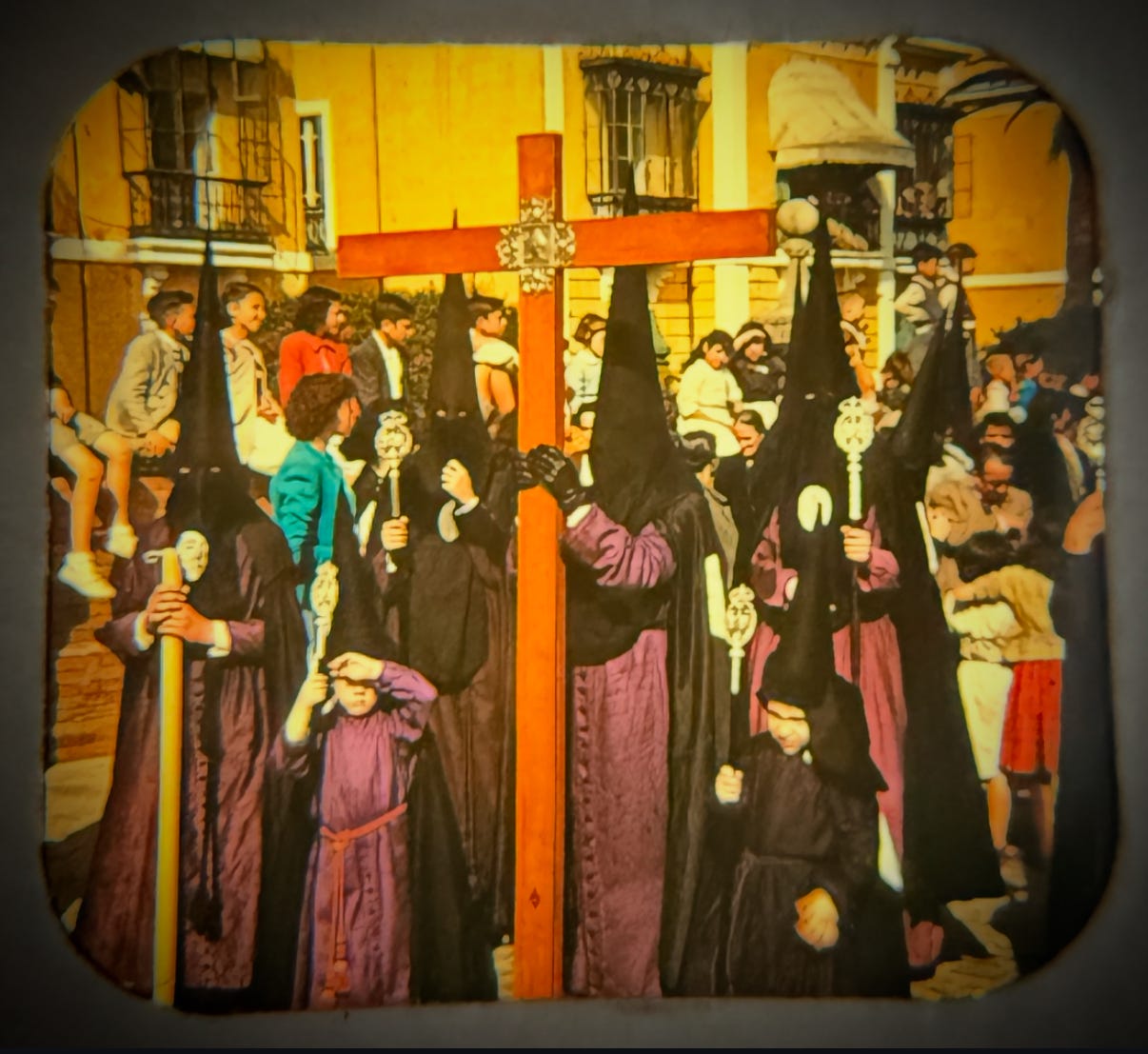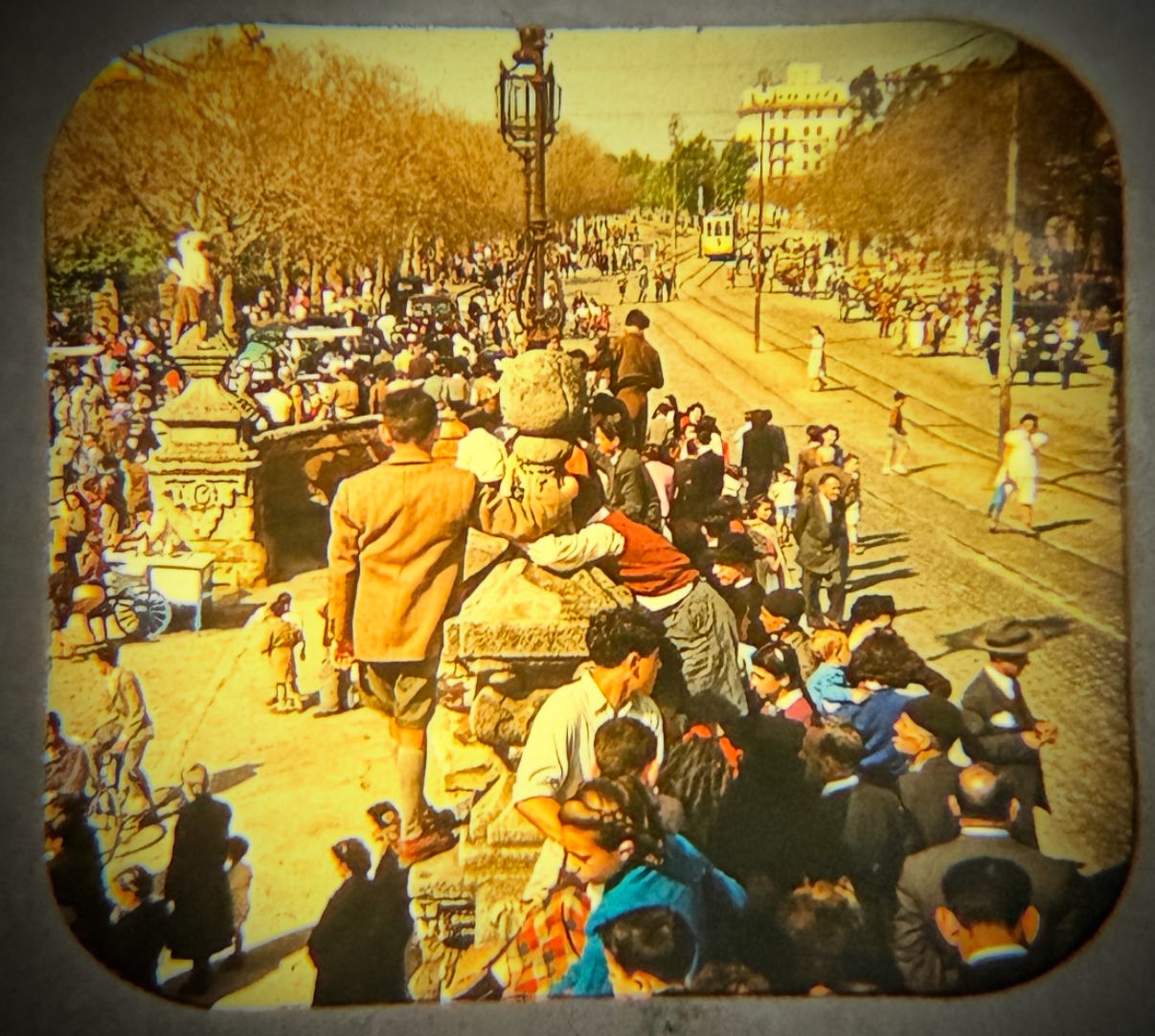Most Fridays I send out an email that features photos from the Rupert Leach Collection, snaps taken from the personal reels of View-Master’s Director of Photography in the 1940s and ‘50s. These never-before-published images show alternative shots of some commercial View-Master reels and personal photos of Leach, his wife Poppy, and others.
I try to get to the bottom of the people and places pictured within despite the limited context provided by mostly unmarked reels. Let’s dig in!
This reel is marked “HOLY WEEK” and features scenes from Seville, Spain’s Catholic festival that happens the week ahead of Easter.
According to Addison Magazine, one of the great places to experience Holy Week for Catholics is Seville.
The reason that this tradition is so ingrained in Seville (more than any other city in Spain) is due to the great Romanization of the city. Seville is deeply rooted in Christianity and as such, Holy Week is an important part of the culture of the city. It is a tradition that has maintained for hundreds of years with very little change.
Holy Week traditions in Seville date all the way back to the 1350s!
Holy Week begins with Palm Sunday and it ends on Easter Sunday; the week consists of different processions in which there are different floats that tell a different part of the Easter story. The floats are called “Pasos” and are carried around the streets of Seville by “costaleros” or bearers; “Nazarenos” or penitents follow these floats with some works of art on the floats dating back to the 17th century. Some of the floats take up to 40 costaleros to carry it through the processions, which can last up to eight hours. Because of the [number] of people who want to take part in the procession and the few spots available, the job of the costalero is a once-in-a-lifetime position. The processions are organized by different “brotherhoods” and there are several dozen brotherhoods who take part each year.
There is a standard structure to the procession. It includes a great cross carried at the beginning; a number of people dressed in habit and holding long wax candles (lit only at night) marching in silence; a group of altar boys or acolytes, dressed in vestments; a float or platform is next and carries sculptures depicting biblical scenes, a musical group comes next followed by a number of penitents carrying wooden crosses.
A procession can be made up from a few hundred to near 3,000 Nazarenos and last anywhere from 4 to 14 hours, depending how far the home church is from the cathedral. The largest processions can take over an hour and a half to cross one particular spot.
While this image was weird to me at first, it has an interesting backstory:
The processions are organized by hermandades and cofradías, religious brotherhoods. Members precede the pasos dressed in penitential robes with capirotes, tall, pointed hoods with eye-holes. The capirotes were designed so the faithful could repent in anonymity, without being recognised as self-confessed sinners.
Nearly 70 cofradias (church brotherhoods) take part, each with their own image… The processions follow a designated route from their home-churches and chapels to the cathedral, usually via a central viewing area and back.
There are up to three pasos in each procession. The pasos dedicated to Jesus use figures of wood, wax, and wire to depict scenes from the Passion, and are usually covered in gold. The pasos dedicated to the Virgin Mary are usually covered in silver, and depict Mary weeping for her Son and sometimes holding Him in her arms.
Thousands of people line the streets to watch the processions that change from day to day; this is the best way to watch each procession. The processions start on Palm Sunday and the mood of the processions changes each day to more somber ones like the Good Friday procession, which tells of the crucifixion and death of Jesus and finally ends with the celebration of Easter Sunday that celebrates Jesus’ resurrection.
If you’d like to get a sense of what this is really like, here’s a short snippet from Rick Steves’ European Easter on Palm Sunday in Seville:
That’s it for this week! Thanks for reading along. Be sure to smash that ❤️ button so I know you’re out there and following along!










Incredible colors! That must be a feast for the eyes, man. Great write-up!